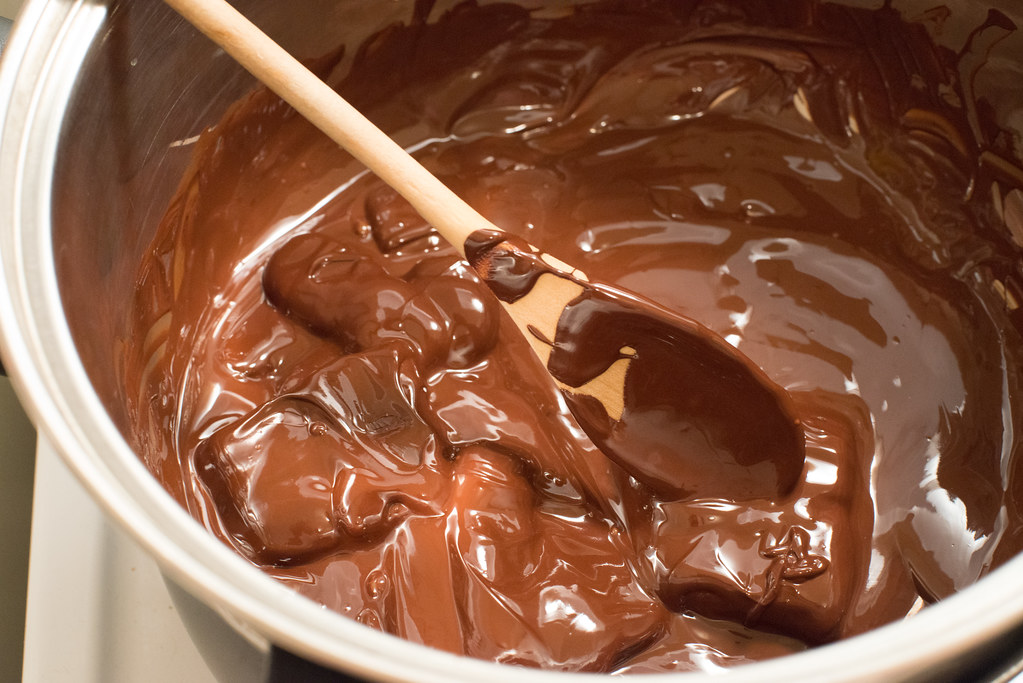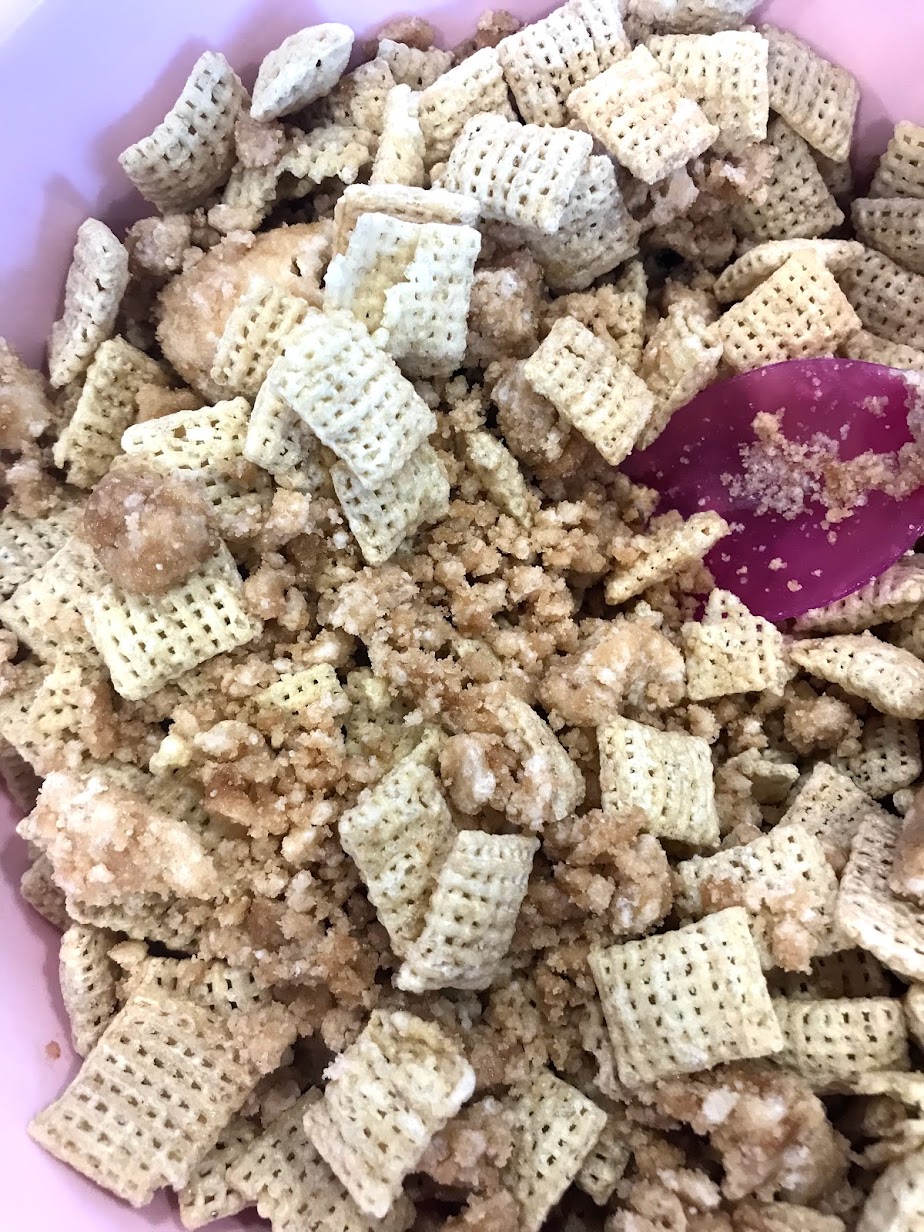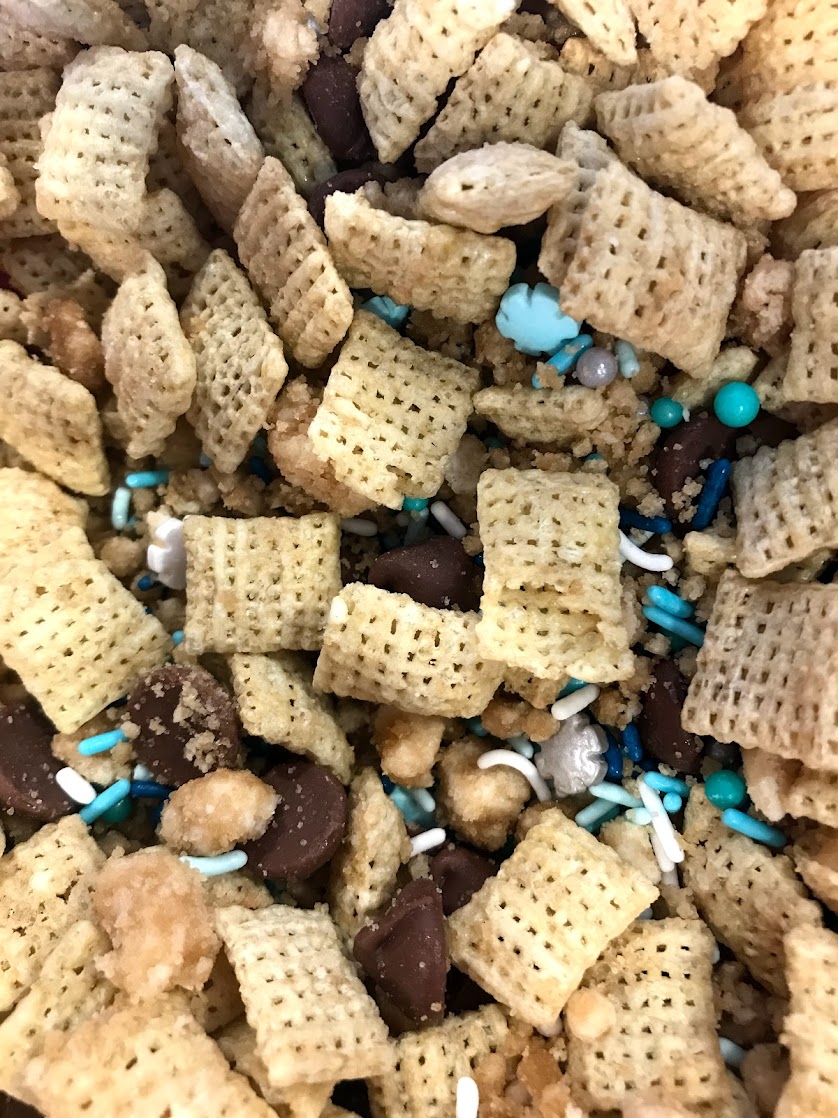A Silly Mistake, From Which I Learned Something New!

So, I learned something new this week. I was making a meal with my 6 year old daughter. I rotate through each of my children and give them opportunities to plan and prepare a meal with me, and it’s one of their favorite things.
My daughter had chosen Chocolate Chip Cookie Dough Muddy Buddies, which sounded amazing! The directions told us to melt some white chocolate chips, and then add brown sugar, salt, and vanilla extract. We did as the directions said- and ended up with a clump of seized chocolate. I thought that was so weird because I was so careful when melting the chocolate, but I figured I must have overdone it still, so we repeated the process with some new ingredients- with the exact same results. I noticed that my chocolate really started hardening after I added the vanilla extract, which made me curious- does extract make chocolate seize up?
The short answer- yup. How did I not know this?? I guess it just goes to show that you can learn something new every day, no matter how old you are!
Extracts will seize up chocolate because of the alcohol content. If you have a chocolate mixture, meaning it has other ingredients with it, then it should be fine. But if you add an extract to plain, melted chocolate, you’ll end up with a big lump. Chocolate is such a finicky thing- it will act up if you add too much moisture, and it will act up if you add too little, as well.
If you want to flavor your chocolate, there is a way to go about it- you just have to be a little more careful!
Pay attention to the ingredients of the flavoring. If it is oil-based, it will blend in with your chocolate without creating a hunk of edible Play-doh. However, if water is listed as the first ingredient, you don’t want to add that to plain melted chocolate. Try adding your other ingredients first, to create that chocolate “mixture” we were talking about. For example, heating your chocolate by adding it to a little heated cream will help stabilize it and allow you more flexibility for adding flavorings. You can also buy special flavorings that are specifically created for flavoring chocolate and candy. When adding flavoring, it can be helpful to warm it up, so that it’s the same temperature as the chocolate, or letting the chocolate cool a little first. Add a tiny bit at a time, and mix well between additions.
Really, it’s a little trial and error, depending on what you are using the chocolate for, and what else you may be mixing with it! But hopefully you have a little better idea of what you should and shouldn’t add to your melted chocolate!
In our situation, we ended up embracing the clumping. It still tasted delicious- white chocolate and brown sugar are pretty hard to mess up! We broke the chocolate lump into small clumps and added it to the Chex.

Once we added some chocolate chips and sprinkles, we had our own little tasty mix that the kids were thrilled with, so it wasn’t a complete disaster ;). And I learned something new for next time!

Sources:
- https://www.wheatmontana.com/content/high-altitude-baking-how-make-your-recipes-work-mountains
- https://blog.thermoworks.com/thermometer/high-altitude-effects-cooking/
- https://www.allrecipes.com/article/high-altitude-cake-baking/
- https://www.bettycrocker.com/how-to/tipslibrary/baking-tips/baking-cooking-high-altitudes
- https://www.flickr.com/photos/stone-soup/2240901789
 Camille Hoffmann
Camille Hoffmann
Monthly Newsletter Contributor since 2014
Email the author! camille@dvo.com
